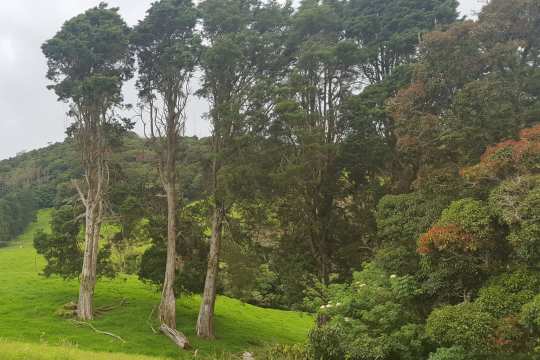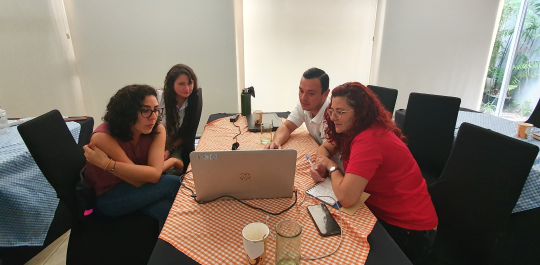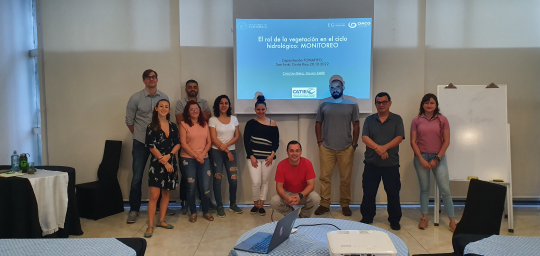A team of EfD Central America researchers provided a training titled Monitoring the provision of ecosystem services using InVEST to make decisions. The aim was to strengthen the capacities of the staff of the National Forestry Financing Fund (FONAFIFO) in the use of a modeling tool, that improves the allocation of funds to maximize water resources and update the knowledge on water dynamics related to farms, forests, and landscapes.
The training was part of the project Strengthening the monitoring scheme of PES of FONAFIFO: Impact evaluation of the PES-FONAFIFO on the water resource, which is financed by the French Development Agency (AFD) and is executed by EfD Central America, based at CATIE, with the collaboration of the French Agricultural Research and International Cooperation Organization (CIRAD).
Positive effects of PES
The Payment for Ecosystem Services (PES) has helped reduce the deforestation rate and land degradation in Costa Rica.
This, along with other actions and policies implemented in the country, Costa Rica increased its forest cover from less than 30%, in the 1980s to 54% today; however, there is not sufficient data to identify how much these actions have improved ecosystem services such as biodiversity, and the quality and quantity of water.
"The use of spatial models allows targeting resources to areas that have the potential to generate more impact at the same cost," said Bárbara Viguera, EfD Central America junior researcher.
Viguera added that spatial analysis of landscape-scale dynamics helps to understand the flows of ecosystem services provided by forests and other ecosystems. Also, it helps to quantify changes in the provision of these environmental services due to PES or other land-use changes.
"In addition, incorporating hydrological information generated at the national level will allow the country to respond to different water resource objectives, for instance, increasing recharge in drought-prone areas and reducing the risk of flooding in areas with heavy rainfall. The Costa Rican PES Program counts on opportunities to improve the PES scheme and to facilitate future monitoring."
Will contribute to policy making
During the training, one goal of the instructors was to inform on the advances in the impact evaluation of PES on water resources by EfD Central America's team. Another goal was to teach the application of spatial models to evaluate indicators of water ecosystem services to make decisions.
A third goal achieved by the participants was to identify the indicators of water resources and get the capacity to use monitoring techniques at different scales.
According to the answers provided by the participants in a survey shared at the end of the course, they will apply the new knowledge generating useful information for the decision-makers to be considered in possible new policies.
Also, the training was perceived as an opportunity to model data scientifically, and to provide the information generated by the institution at the national level.
About InVEST
The modeling tool used during the training is known as InVEST, which stands for Integrated Valuation of Ecosystem Services and Tradeoffs. This tool is accessible for free as open-source software, on the Web Site of Stanford University.
"InVEST is a suite of models used to map and value the goods and services from nature that sustain and fulfill human life", according to the official Web Site of InVEST. Also, "it helps to explore how changes in ecosystems can lead to changes in the flows of many different benefits to people", as stated by Natural Capital Project team at Stanford University.
More information about InVEST can be located at: https://naturalcapitalproject.stanford.edu/software/invest
Written by: Marianela Argüello L.


